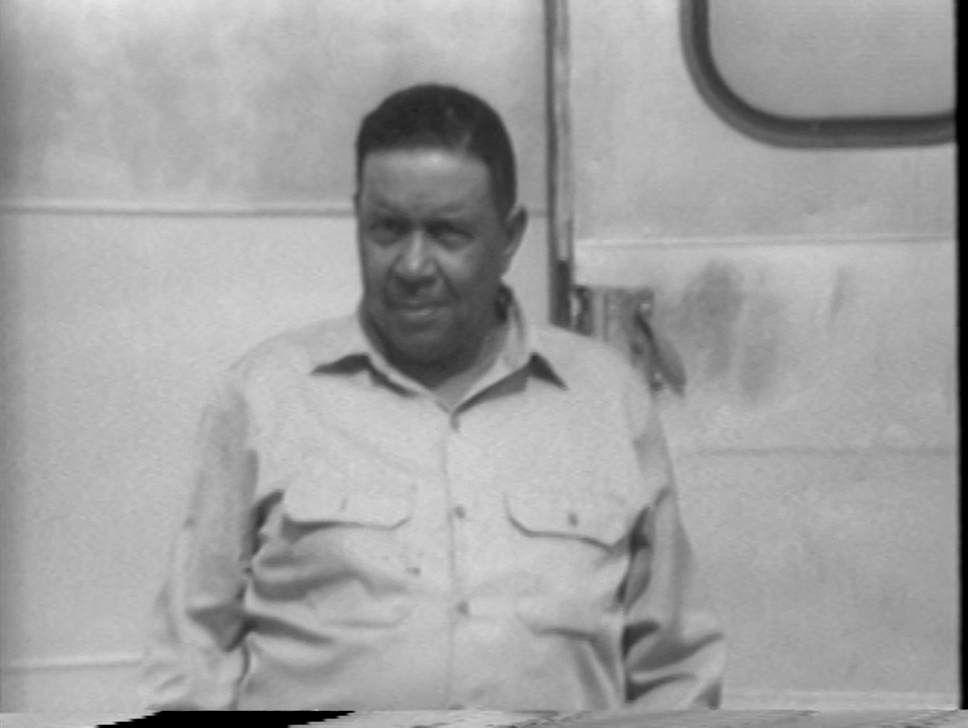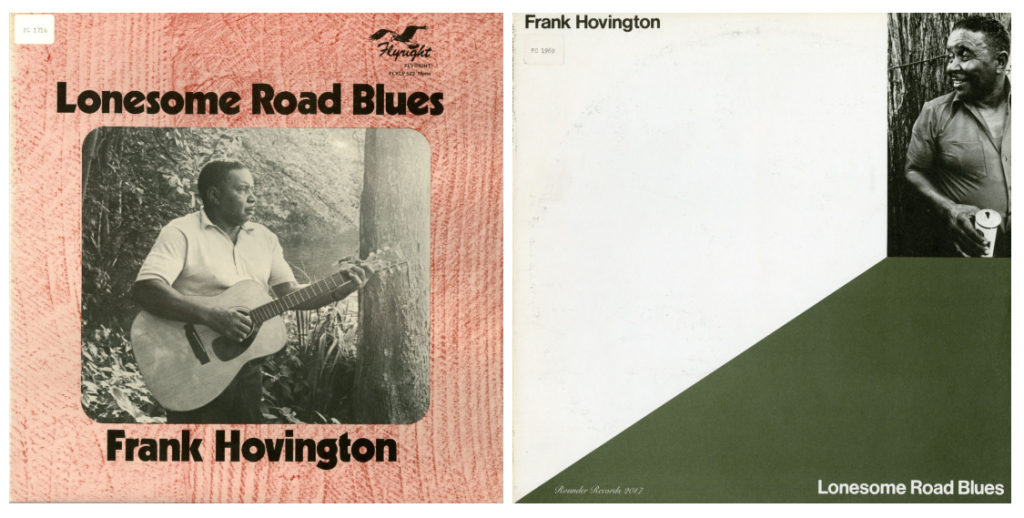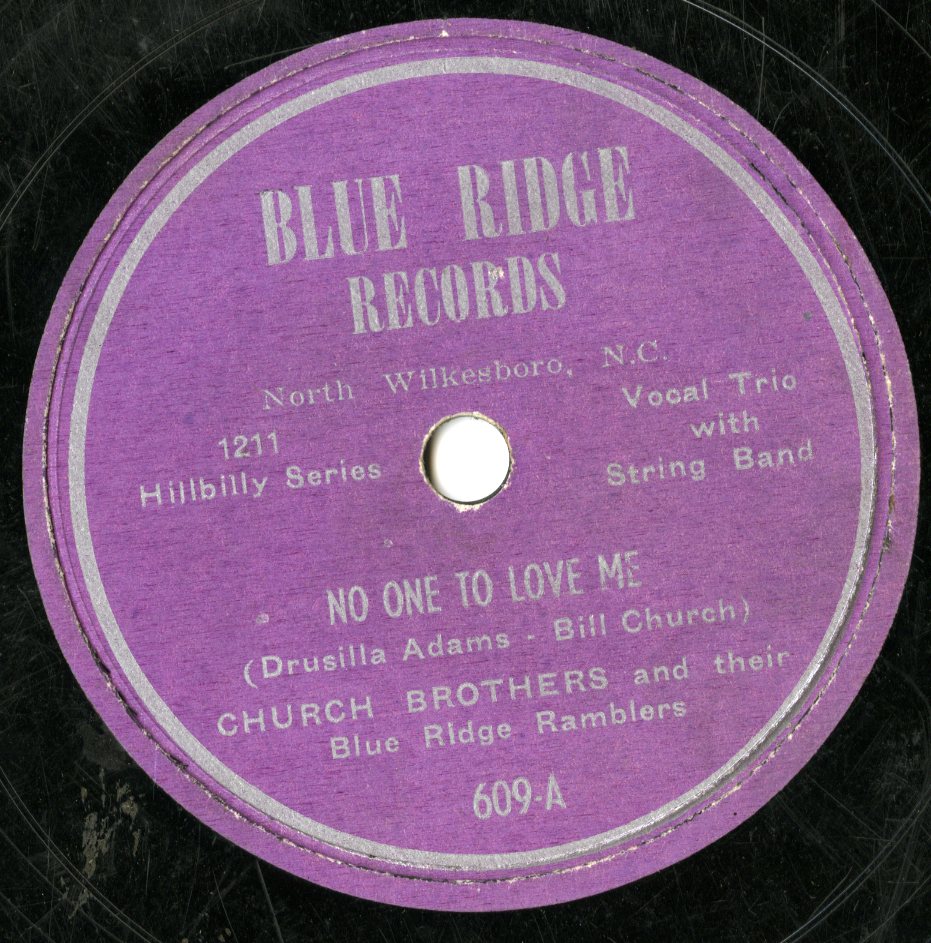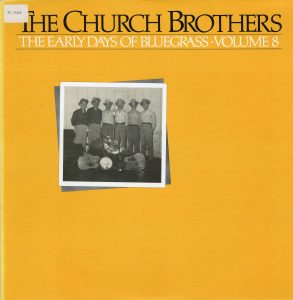
One of my personal favorites in the Robert D. Bethke Collection (20466) is a video recording (VT-20466/21) of Frank Hovington playing guitar and singing at his home in Felton, Deleware back in April of 1978.
The Bethke Collection contains several original analog audio and video recordings of Frank Hovington (1919-1982), an American blues musician who was known for playing his guitar in the Piedmont blues style.
It’s a fascinating story how Frank (aka Guitar Frank), a man who lived the majority of his life in the state of Delaware, began playing the Piedmont blues. Music was in his family (Frank’s grandfather belonged to a fife and drum corps and his paternal uncle played piano and organ), but it was Frank’s neighbor, Adam Greenfield, who influenced him the most. Greenfield was a former Pullman porter from New Bern, North Carolina, who eventually bought a farm and settled about three miles from the Hovington family’s farm. According to Frank,
“They used to have what they called parties on a Saturday night, house-hops, and I would go ’round with my father and sit and hear [Adam Greenfield] play…and that was when I was first inspired to play banjo and guitar through him…I was only around five or six years old and I used to love to get right near him and watch that guitar and watch his fingers when he was playing and my father used to let me go and stay and watch him, so every time he used to be around town, I’d always make it my way to find where he was and listen to that guitar.”*

Another video (VT-20466/36, VT-20466/37) in the Bethke Collection documents Frank telling his Piedmont blues origin story to a group of elementary school students. I highly recommend checking this footage out. Not only do you get to see Frank tell his own story, but you also get to hear Frank play his songs to an enthusiastic audience of children, whose little voices and rowdy responses add a really special element to the video.
Now back to the 1978 footage of Frank I mentioned above. Robert D. Bethke, a folklorist who taught courses at the University of Delaware from 1977 to 2000, shot this particular video on portapak, a portable analog video tape recording system introduced in 1967 that made it possible to shoot and record video outside of a studio.

The video features Frank playing such traditional songs as “Railroad Blues” and “John Henry”. We also catch a glimpse of his home and property, on what looks like a nice, sunny spring day.
Thanks to a grant from the Andrew W. Mellon Foundation grant, this particular video (+ over 80 audio and video recordings found in the Bethke Collection!) have been preserved and are now accessible through the Bethke Collection finding aid (streaming access to the collection’s audio and video materials is limited to the UNC campus at this time). For your enjoyment, we’ve edited this short clip that features Frank playing “John Henry” :
"John Henry" lyrics transcribed from video recording VT-20466/21: John asked his captain, When are you goin' to town? If you bring me a twenty pound hammer, Beat a little steel back on down, hey gal Beat a little steel back on Beat a little steel back on down Well, who been here since I been gone? Well, who gonna kiss your rosy cheeks? Well, who gonna shoe your cozy feet? John Henry's woman, she talked so fair Get my shoes from a steel-drivin' man Kisses from a millionaire, hey gal Kisses from a millionaire Kisses from a millionaire John Henry asked his captain, When are you goin' to town? If you bring me a twenty pound hammer, Beat a little steel back on down Beat a little steel back on Beat a little steel back on down Early in the morning, 'bout the break of day Heard a voice in the wilderness, cryin, Well, my side givin' away Well, my left side givin' away Well, my left side givin' away Well, Who been here since I been gone? Well, who gonna kiss your rosy cheeks? Who's gonna be your man? Who's gonna be your man? John Henry's woman, well, she talked so fair Get my shoes from a steel-drivin' man Kisses from a millionaire, hey gal Kisses from a millionaire Kisses from a millionaire Well, who been here since I been gone? John Henry's woman, name was Polly Ann Day she heard John Henry died She drove steel like a man, hey gal She drove steel like a man She drove steel like a man
Frank may be best known for his album Lonesome Road Blues, which like the video clip above, features intimate home recordings of Hovington, but this time on guitar, vocals, AND banjo. Folklorist, Bruce Bastin, and musicologist, Dick Spottswood, made the album recordings at Frank’s home over a July weekend in 1975, just three years before Bethke made his way to the same address. The album was released by Bastin’s label, Flyright Records, in 1976 (FLY LP 522) and then again by Rounder Records in 1979 (Rounder Records 2017).

The Southern Folklife Collection has copies of both of these releases (pictured above), as well as materials relating to the Flyright release in the Bruce Bastin Collection (20428). We invite you to dig through all of these materials across SFC’s collections to get to know Frank Hovington and his music. A good start may be Bastin’s impressive liner notes on Lonesome Road Blues, as well as the subject files and images of Frank found in the Robert D. Bethke Collection. Happy sleuthing.
*Frank Hovington quote taken from Bruce Bastin’s liner notes to Frank Hovington: Lonesome Road Blues.- Flyright FLYLP 522 (1976)




